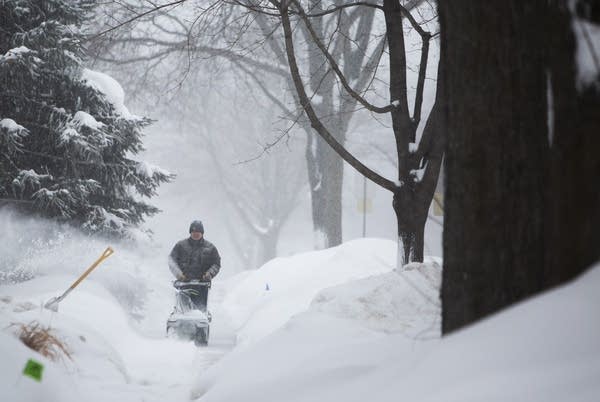Wettest year, extreme cold: Minnesota's top 5 weather events in 2019
The Twin Cities, Rochester, and St. Cloud all recorded the wettest year on record in 2019.

Harry Huie clears snow from the sidewalk in front of his house on Sixth Street in Rochester, Minn., Wednesday, Feb. 20.
Christine T. Nguyen | MPR News 2019
Go Deeper.
Create an account or log in to save stories.
Like this?
Thanks for liking this story! We have added it to a list of your favorite stories.


